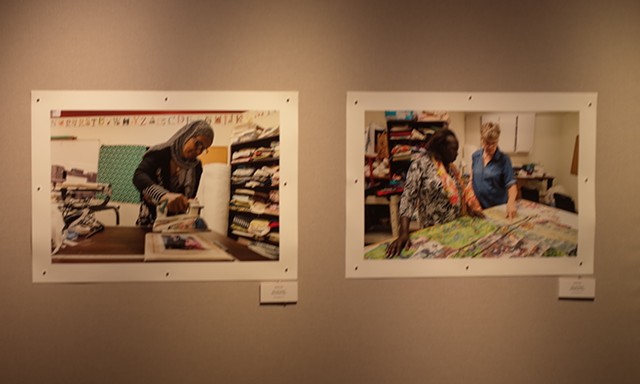More 1000 Footsteps Tell the Story
About: Journey Story Quilts
This project is through Once We Were Refugees a not-for-profit that teaches vocational skills. oncewewererefugees.org
These quilts capture the journey story of refugee families through their own words, drawings and photographs. Images and designs overcome the barrier of literacy and lack of English to put down the story before it is forgotten. All of the quilts belong to their makers. Each quilt provides a physical reminder of their exodus from their home country. It is also a way to pass their journey story down to future generations.
The Process:
• Each family discusses their journey with volunteers. The story is printed next to each quilt to help explain specific images that were used in the designs.
• Quilts are started by placing a 44-inch by 72-inch piece of muslin on a wall.
• The background for the quilt is cut from fabric to designate different parts of the story. This is pasted to the muslin with washable glue sticks.
• Pictures are gathered or drawn to tell the story. Each image is scanned into a computer and input into EQ7 quilting software. They are cropped and sized before being printed onto prepared fabric to print with an ink jet printer. Once treated to assure the ink is permanently set the pictures are cut out and pasted to the quilt.
• The quilt is then put in a longarm quilting machine. A layer of neutral color netting is placed over the quilt to hold all the items in place and this is all quilted down. The quilting is done using the requested designs of the refugees.
• Quilts are bound by each student. A hanging tube is added and the quilt belongs to the refugee family.
Why no names on any of the quilts? Refugees have family members still living in camps or in nations under civil unrest or war. For the protection of the refugees and their extended families only the country of origin is being used.
